09 Starling
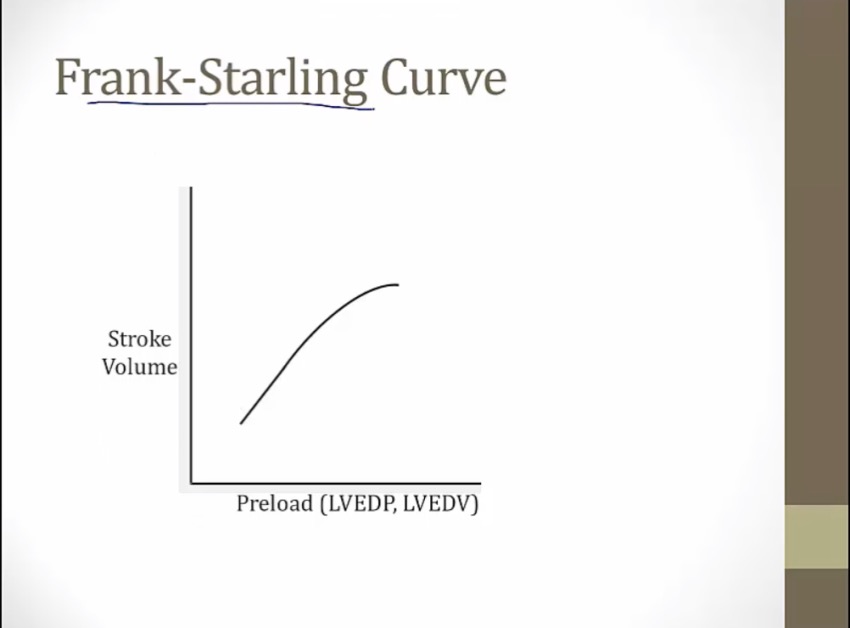
- preload can be either pressure or volume
- the more you load the ventricle with fluid, the more it’ll pump
- allows heart to pump with higher venous return, otherwise blood would pool in venous system
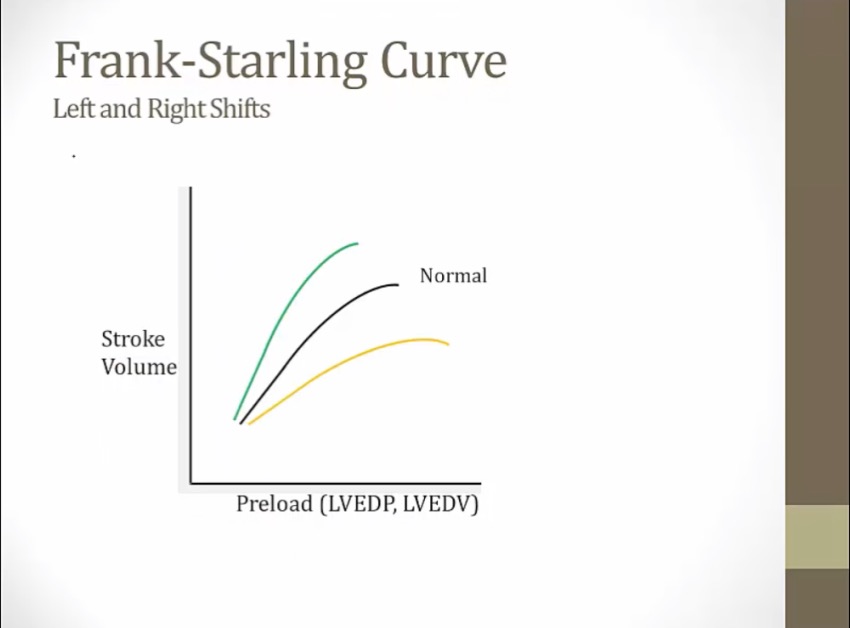
- shifting to left: at same preload, more stroke volume
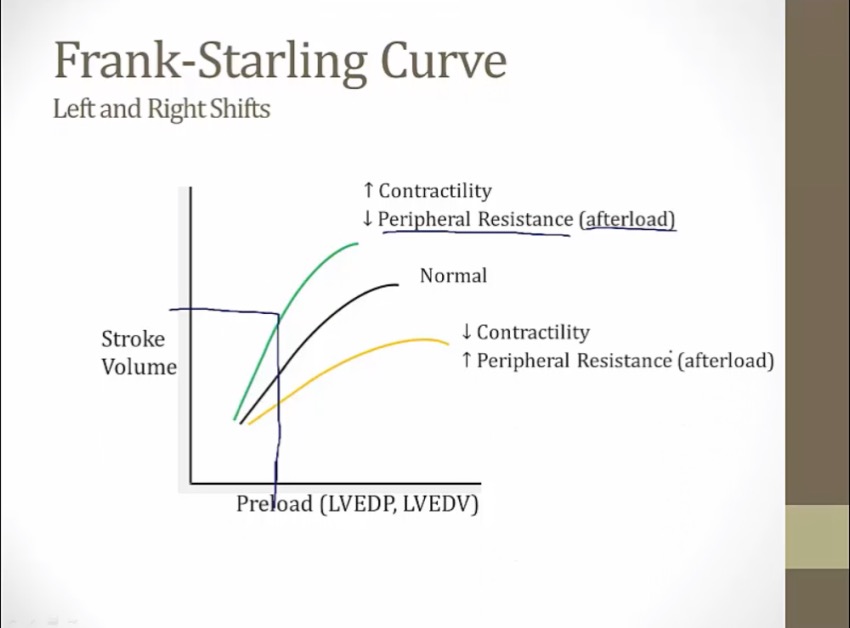
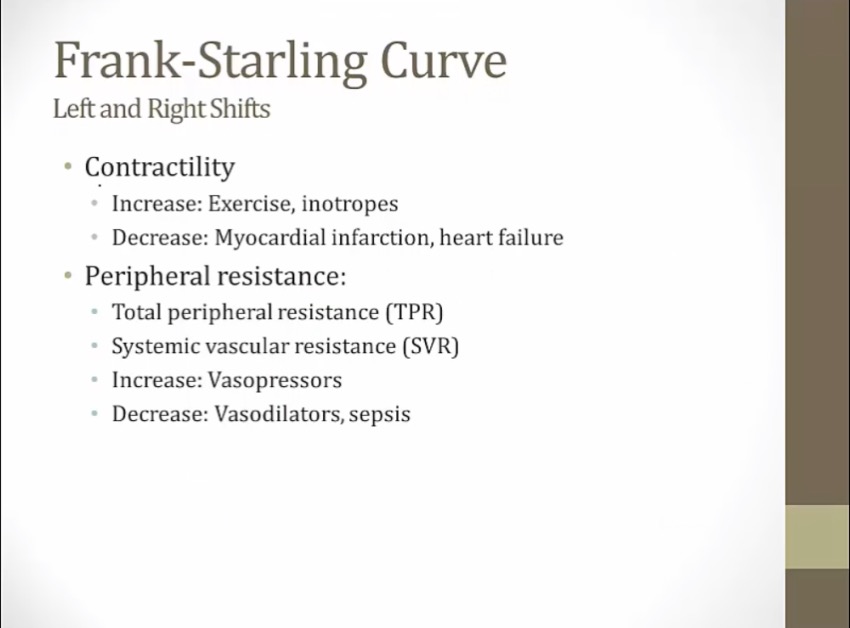
- TPR = SVR = peripheral resistance
Venous Return
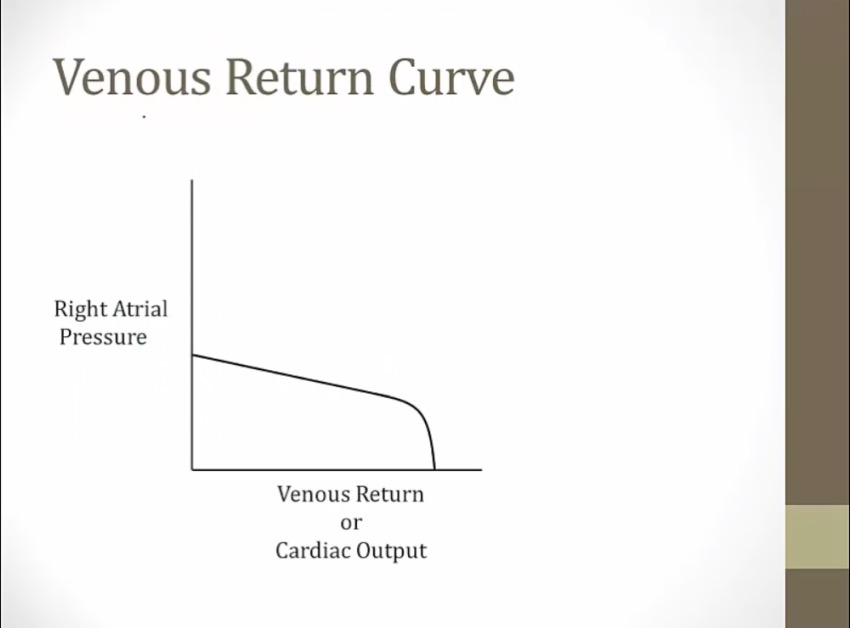
- venous return = CO: blood returned to heart = blood pumped out of heart
- X axis could be either venous return or CO
- as CO increases, RAP falls
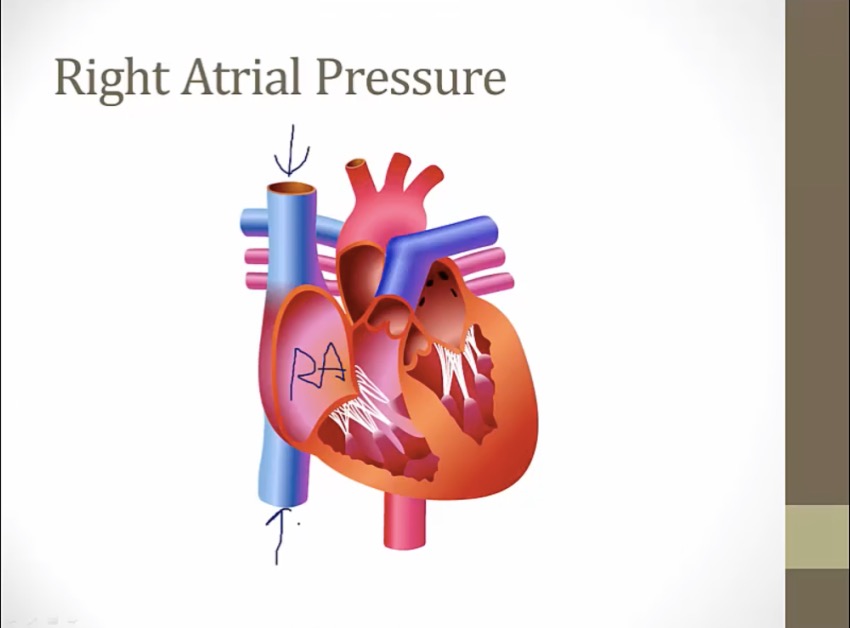
- RAP equal to venous pressure from SVC/IVC
- Increased CO: pulls more blood out of RV/RA, lowers RA pressure
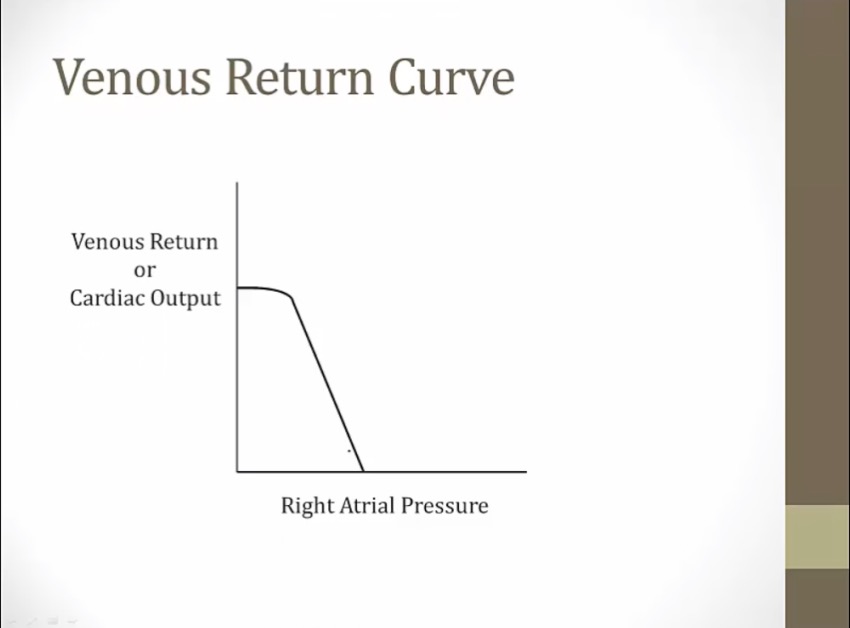
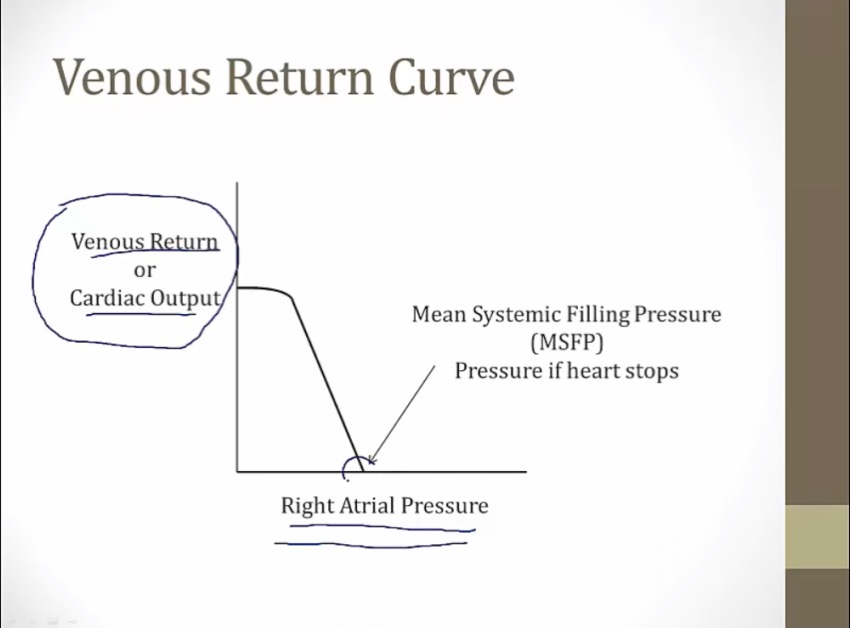
- MSFP defined by volume in venous system and tone of veins in body
- MSFP = pressure when CO is 0

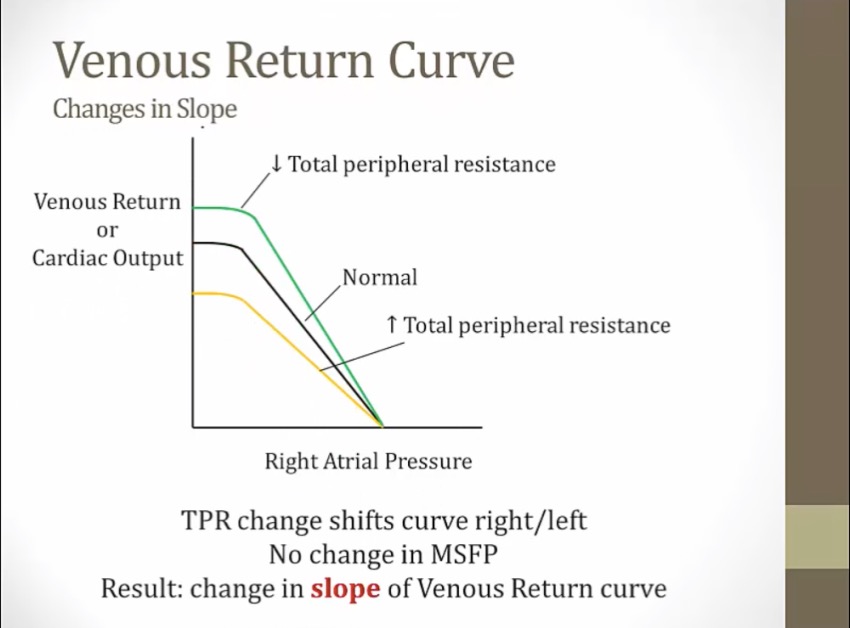
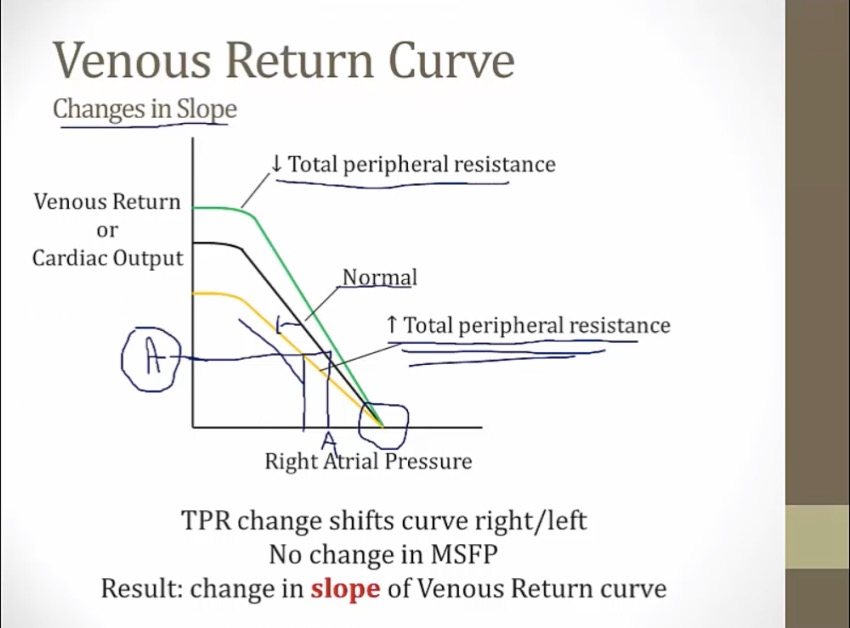
- increased TPR: same CO leads to lower venous pressure and lower RAP
Combined Curves
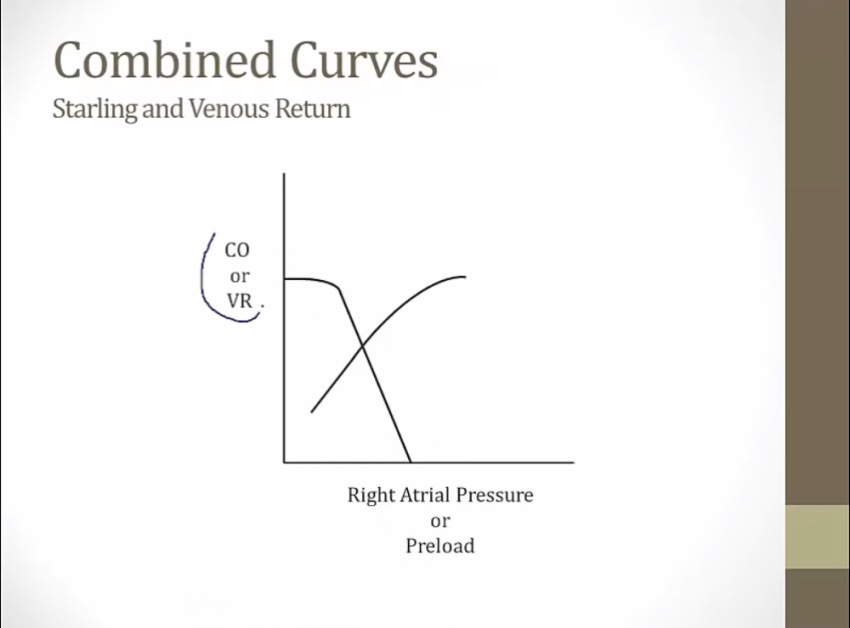
HF

- lower contractility: shift to right of starling curve
- fluid retention: increased fluid volume, shift venous return curve right
- increased TPR: changes slope of venous return curve
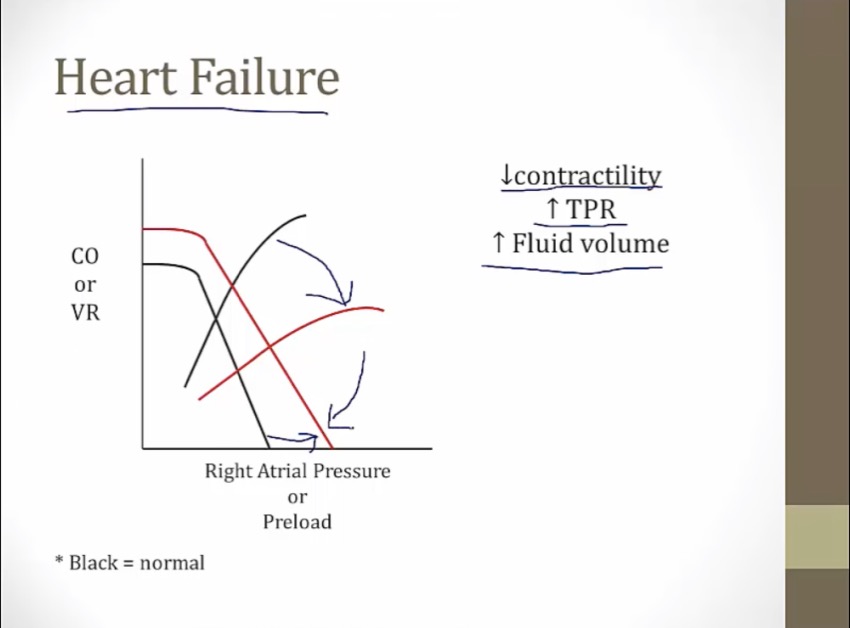
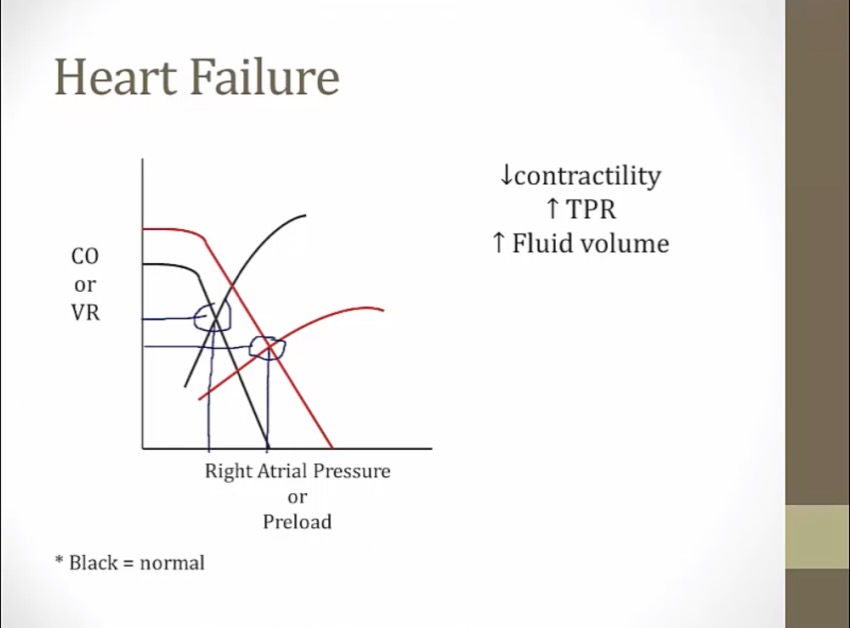
Hemorrhage

- blood loss: shift venous return left
- TPR up: slope left
- contractility: starling curve up
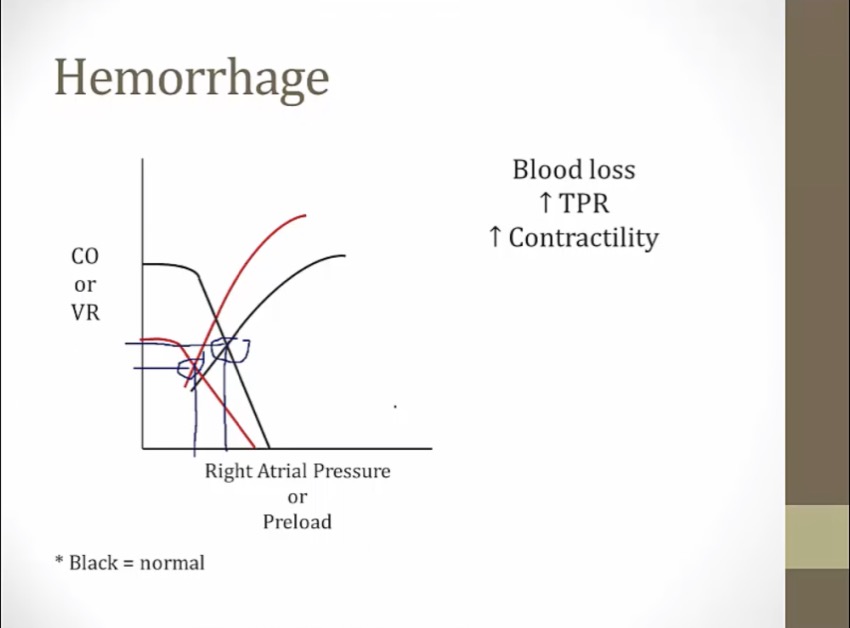
Exercise
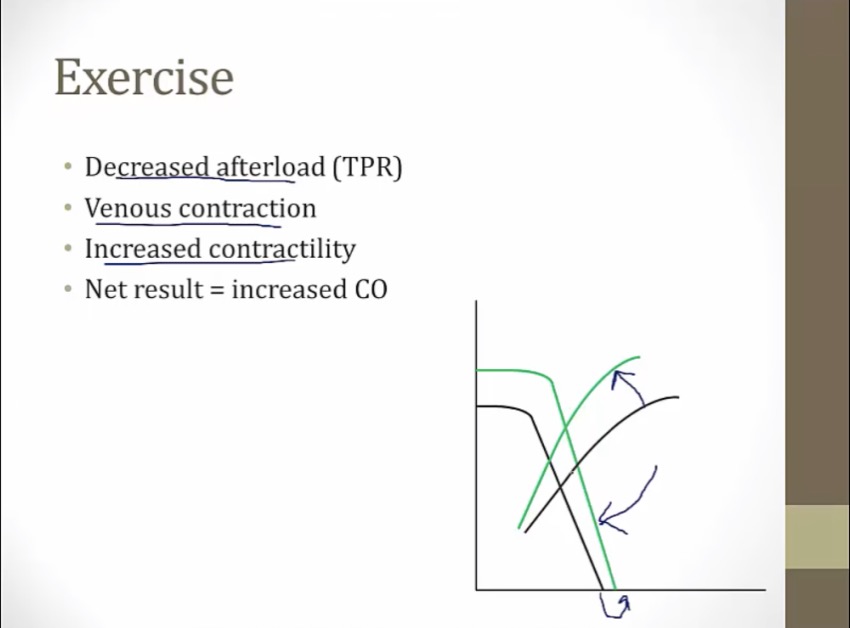
- venous contraction from sympathetic activation
- venous contraction: move to right
- decreased TPR: slope right
- higher CO in exercise
Fistula
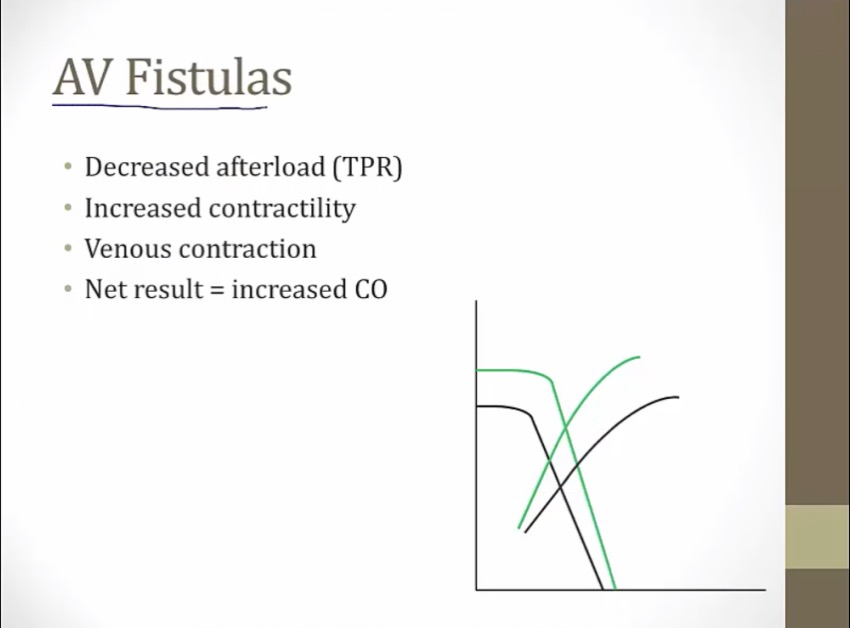
- same as exercise
- high output heart failure
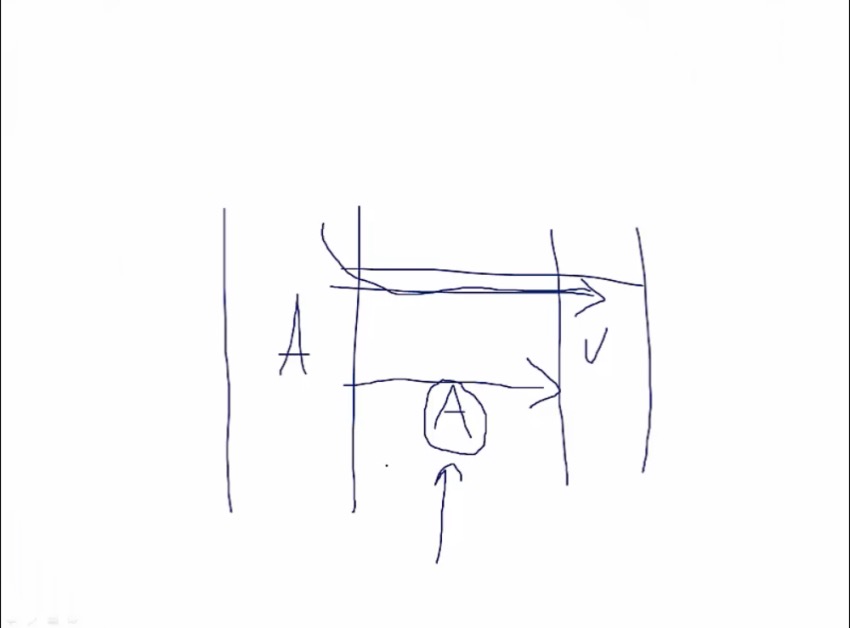
- nl: arteriole connectes arteries and veins. Arteries have high resistance
- AV: bypass from A to V with low resistance
- result: TPR down
Vasopressors
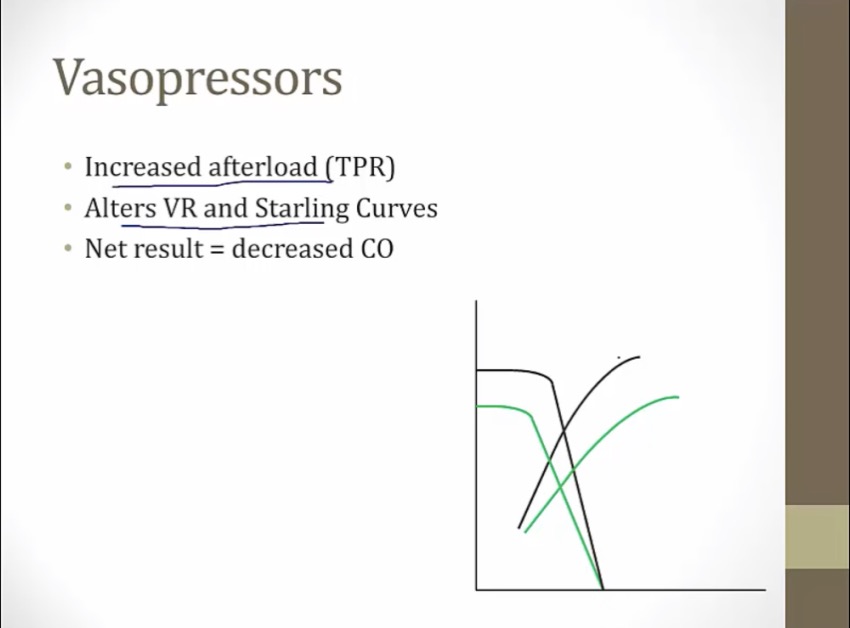
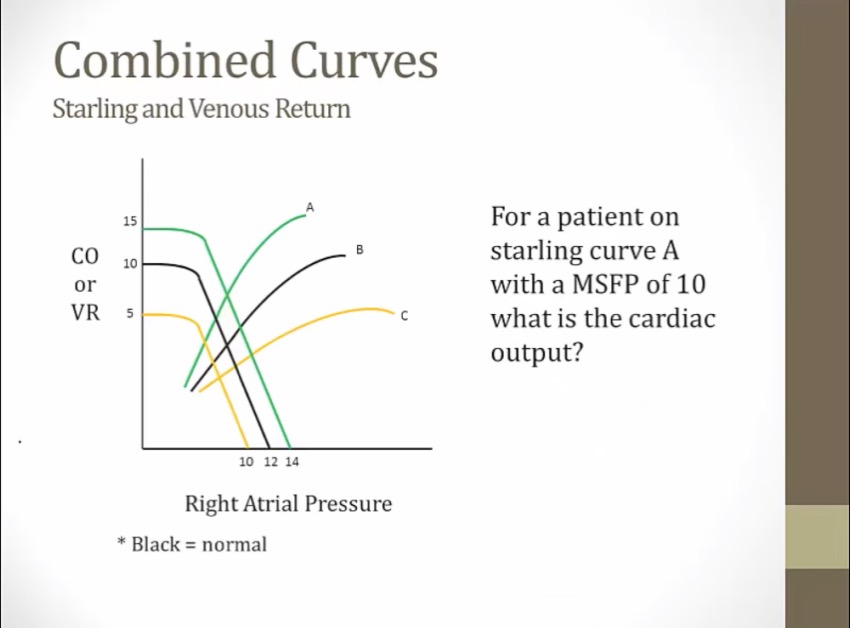
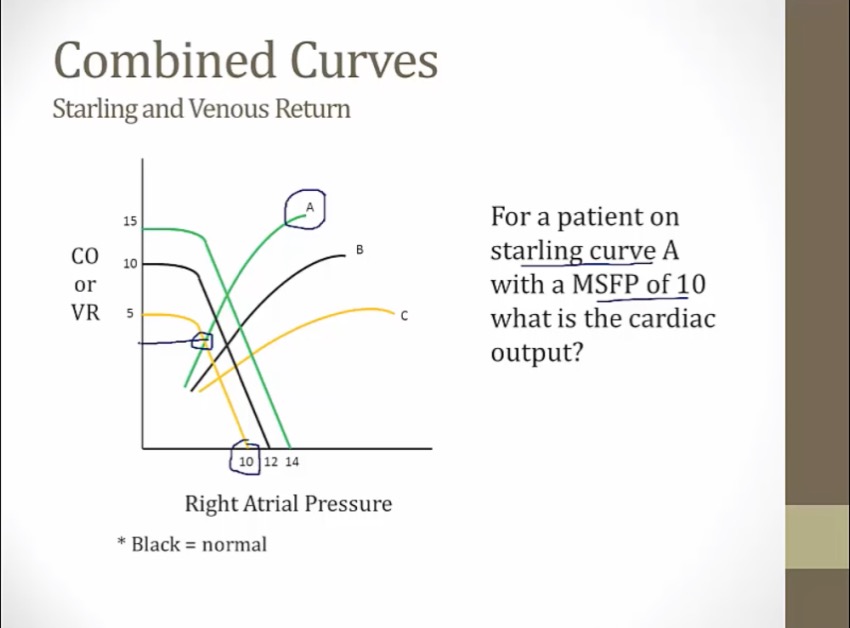
Links to this note






















